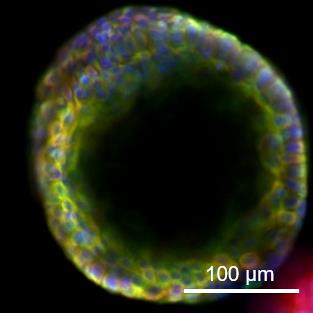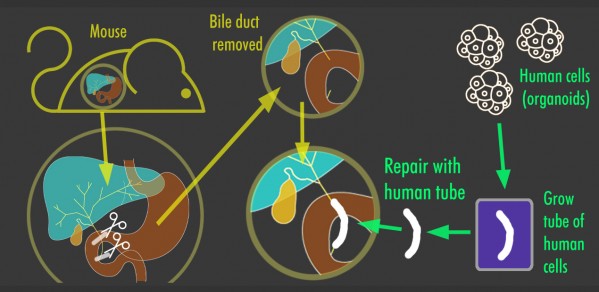Dr Athina Markaki and Dr Alexander Justin of the Department of Engineering along with Prof. Ludovic Vallier, Dr Fotios Sampaziotis (Wellcome – MRC Cambridge Stem Cell Institute) and Mr Kourosh Saeb-Parsy (Department of Surgery) have been awarded a Rosetrees Trust Award for Interdisciplinary Research between the Departments of Engineering and Medicine.
The interdisciplinary research aims to generate the first fully-functional bioengineered bile duct to replace the native bile duct in small and large animal models. Bile ducts are long, tube-like structures that carry bile secreted by the liver and are essential for helping us digest food. If the ducts do not work correctly, for example in the childhood disease biliary atresia, this can lead to damaging build of bile in the liver and the need for a liver transplant.
The team's previous work, published in Nature Medicine, demonstrated the feasibility of generating replacement bile ducts in the lab through a combination of cell transplantation and tissue engineering technology. Human bile duct cells were extracted from tissue and these were grown into functioning 3D duct structures known as biliary organoids. Subsequently they were grown on a biodegradable collagen tube scaffold, which was transplanted into mice as a replacement for the common bile duct. After 4 weeks, the cells had covered the miniature tube which exhibited the key features of a normal, functional bile duct.
For clinical translation, these bio-ducts will need to be scaled-up and tested in larger animals closely resembling human anatomy and physiology. However, the formation of large size constructs requires the addition of a vascular system for delivery of oxygen and nutrients, and waste clearance. The addition of vasculature is thus central to this project.
"We are very excited at the prospect of developing near human size constructs through the incorporation of a vascular network, which will provide adequate tissue oxygenation to support long-term cell survival and function in vivo."said Dr Markaki.
"Developing constructs with vascular networks capable of anastomosis (the reconnection of existing blood vessels) with the host tissue has potential application to wider tissue engineering applications, including the formation of other large-scale tissues," Dr Justin added.
The Rosetrees Trust was established in 1987 to fund research projects that will impact significantly on human health and disease.

Biliary organoids grown on collagen tube exhibiting features of normal, healthy bile ducts.
The content of this page was taken from the Department of Engineering news website.

